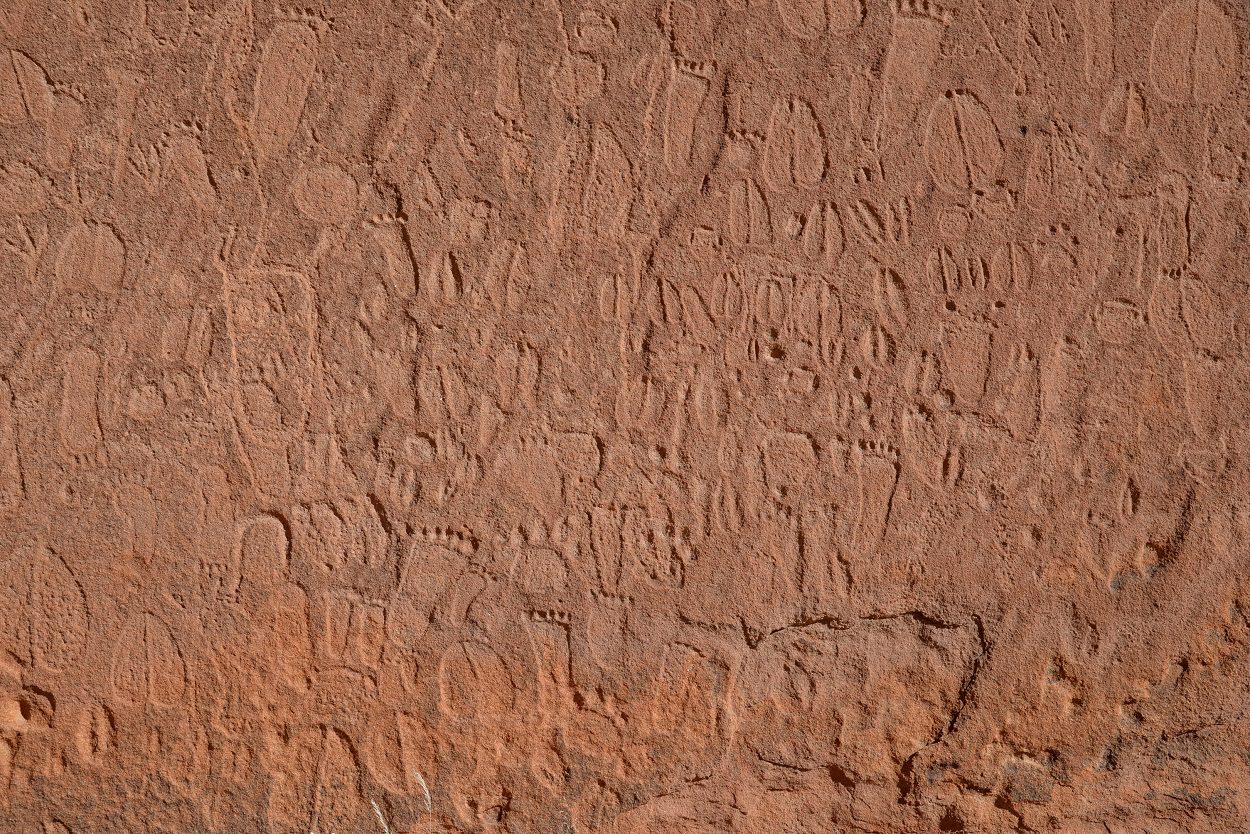Indigenous trackers can identify the species, sex, and age of animals from rock art prints found in Namibia.
According to a study published in the journal PLOS ONE, engravings of animal tracks and human footprints appear in numerous traditions of prehistoric rock art around the world. Namibia is especially rich in hunter-gatherer rock art from the Later Stone Age, with many well-executed engravings of animal and human tracks.
In the new study, researchers enlisted the help of Indigenous trackers from the Kalahari desert to analyse animal and human footprints in rock art in the Doro! Nawas Mountains in central Western Namibia.
The trackers could identify the species, gender, age group, and even the specific leg corresponding to the depicted animal or human prints in over 90% of the 513 engravings they analysed.
Their work also discovered that the rock art exhibited greater diversity in representing animal tracks than in portraying the animals themselves. Additionally, engravers displayed a clear preference for certain species and were more inclined to depict adult animals as opposed to juveniles, along with male footprints over female ones.
These findings reveal discernible patterns that likely stem from culturally influenced preferences, yet the precise meaning of these patterns remains enigmatic.
The researchers suggest that consulting with contemporary Indigenous experts might provide valuable insights into this realm. They emphasize that Indigenous knowledge holds the potential to significantly advance archaeological research; however, in this case, the exact significance and context of the rock art are likely to remain elusive.
According to the study authors: “Archaeologists from the Friedrich-Alexander University of Erlangen-Nürnberg and the University of Cologne in Germany, together with indigenous trackers from the Nyae Nyae Conservancy in Tsumkwe, Namibia, have now examined several hundred of the tracks in more detail and discovered surprising details: the tracks cover a wider range of animal species than in conventional animal depictions and differentiated cultural patterns emerge in the representation of the various species.”
PLOS ONE
Header Image Credit : Andreas Pastoors, CC-BY 4.0







